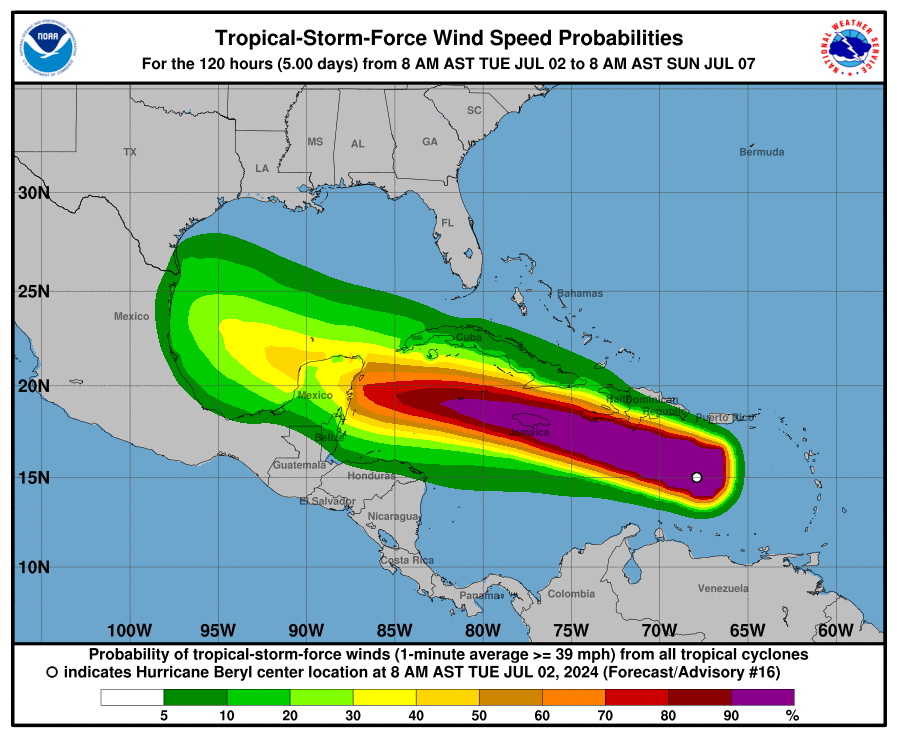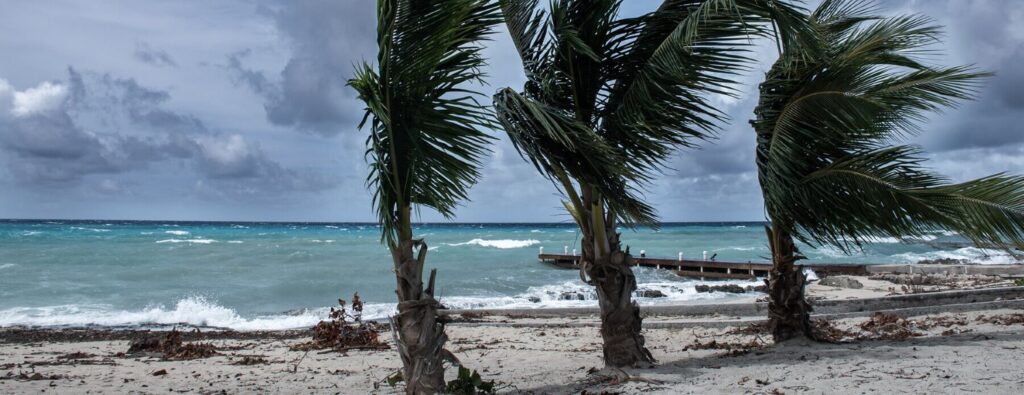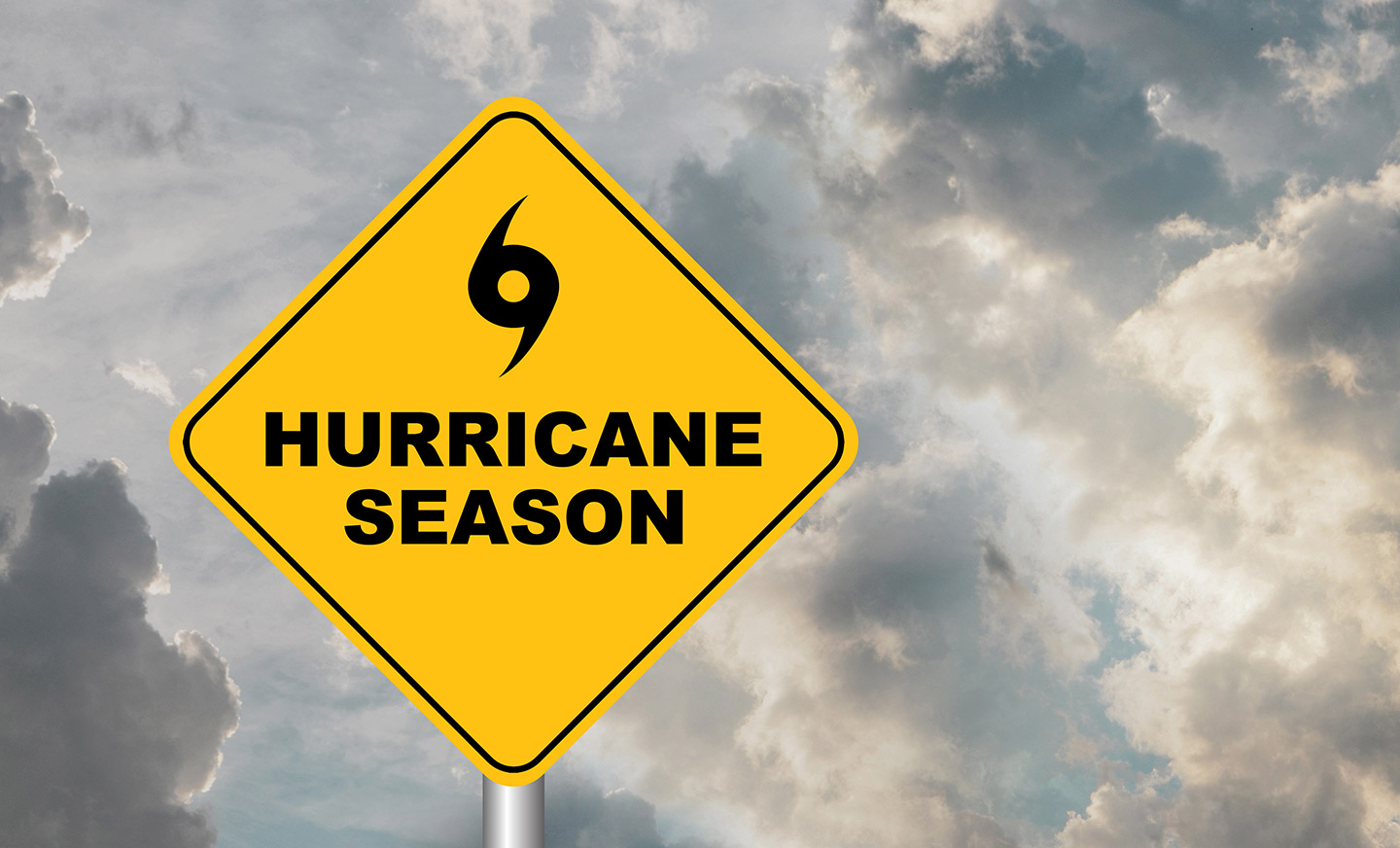History has been made this 2024 Atlantic Hurricane Season with Hurricane Beryl, now a potentially catastrophic Category 5 storm, being the earliest occurrence of a Category 5 hurricane in recorded history. Beryl intensified rapidly. Leaving a trail of destruction as it traveled across the southeastern Caribbean. The National Hurricane Center has warned of life-threatening winds and storm surge as Beryl approaches Jamaica on Wednesday, July 3rd, with impacts expected across the Cayman Islands to follow.

Beryl’s rapid intensification and the unprecedented timing of such a powerful storm highlight a growing trend in hurricane behavior. This phenomenon, where a storm’s strength significantly increases within a short period, is becoming alarmingly frequent. With the 2024 hurricane season in full swing, this trend, influenced by La Niña conditions, underscores the urgent need for enhanced preparedness and resilience measures.
La Niña’s Impact on Hurricane Rapid Intensification
La Niña, characterized by cooler sea surface temperatures in the central and eastern Pacific Ocean, typically results in more active hurricane seasons in the Atlantic. The Climate Adaptation Center (CAC) has forecasted 24 named storms, 12 hurricanes, and 6 major hurricanes for 2024. Major hurricanes are defined as Category 3 or higher, with sustained winds of 111 mph or greater. This projection represents a notable increase from previous years, emphasizing the importance of vigilance and robust preparedness measures.
Case Studies: Hurricane Otis and Hurricane Hilary
In October 2023, Hurricane Otis rapidly intensified from a tropical storm to a Category 5 hurricane within 24 hours before making landfall near Acapulco, Mexico. Otis’s sudden strength caught many off guard and caused widespread devastation with significant damage to infrastructure and homes and considerable loss of life.
Similarly, Hurricane Hilary demonstrated rapid intensification as it approached California in August 2023. Initially a Category 1 hurricane, Hilary quickly gained strength, reaching Category 4 status and weakened before making landfall. The intense winds and heavy rainfall caused severe flooding, resulting in three fatalities and over $900 million in damages across Southern California, the Southwestern United States, and portions of Mexico.
Preparing for the 2024 Hurricane Season
Given the heightened hurricane activity forecasted for 2024, preparedness and resilience are critical. The National Oceanic and Atmospheric Administration (NOAA) and other experts recommend several key strategies:
- Develop a Comprehensive Plan: Establish a robust hurricane preparedness plan tailored to your unique operational landscape. Encourage community members to develop family preparedness plans, with resources available at Ready.gov/plan-form.
- Secure Critical Assets: Protect infrastructure, data, and essential resources to ensure operational continuity and minimize disruptions.
- Enhance Communication Channels: Maintain open lines of communication with stakeholders to foster transparency and enable timely dissemination of critical information. Regularly update your community to ensure their safety.
- Prioritize Safety Measures: Equip employees with the necessary resources and training to respond effectively to evolving situations.
- Assemble Emergency Kits: Ensure emergency kits are well-stocked with essential supplies, including non-perishable food, water, medications, flashlights, batteries, and important documents. Guide communities on assembling emergency kits at Ready.gov/kit.
- Know Evacuation Routes: Familiarize your team with local and state evacuation routes. Communicate these routes and evacuation orders to your community promptly. Resources are available at Ready.gov/evacuation.
- Secure Property: Take proactive measures to secure property by reinforcing doors and windows, trimming trees and shrubs, and securing loose outdoor items. Share these tips with your community to help them protect their properties.
- Stay Informed: Regularly monitor national and state weather advisories. Encourage your community to stay updated on local weather developments through reliable sources like NOAA Weather Radio.
Partnering with Tidal Basin Group
At Tidal Basin Group, our team is ready to assist organizations and communities in navigating the challenges of the upcoming hurricane season with resilience and adaptability. Contact Tidal Basin Group for expert advice, planning, training, and exercises. We are committed to helping you prepare for any storm and helping your communities Be stronger than before®.
Sources:



